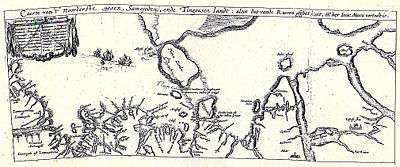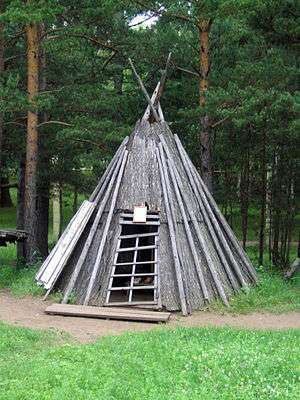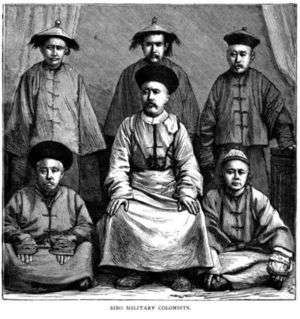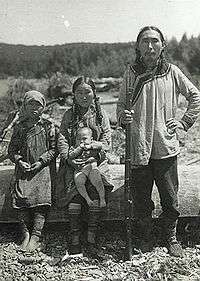Tungusic peoples

Tungusic peoples are the peoples who speak Tungusic languages. They inhabit Eastern Siberia and Northeast Asia.
During the 17th century, the Tsardom of Russia was expanding east across Siberia, and into Tungusic-speaking lands, ending with the 1689 Treaty of Nerchinsk. The first published description of a Tungusic people to reach beyond Russia into the rest of Europe was by the Dutch traveler Isaac Massa in 1612. He passed along information from Russian reports after his stay in Moscow.[1]
Etymology
The word Tungus derives from "Donki", which means "men" in Tungusic languages. Some scholars think it was derived from the Chinese word Donghu (東胡, "Eastern Barbarians", cf. Tonggu 通古 = Tungusic).[2] This "chance similarity in modern pronunciation led to the once widely held assumption that the Eastern Hu were Tungusic in language. However, there is little basis for this theory."[3]
Location

The word originated in Tunguska, a region of eastern Siberia bounded on the west by the Tunguska rivers[4] and on the east by the Pacific Ocean.
The largest group of Tungusic peoples are the Manchu, who in the 21st century number around 10 million. They are originally from Manchuria, which is now Northeast China and Russian Far East. Following their conquest of China in the 17th century, they have been almost totally assimilated into the main Han population of China. This process accelerated especially during the 20th century. The Sibe are a Manchu subgroup.
The Evenks live in the Evenk Autonomous Okrug of Russia. The Udege (Удэгейцы' in Russian; ethnonym: удээ and удэхе, or udee and udehe correspondingly) are a people who live in the Primorsky Krai and Khabarovsk Krai regions, also in Russia.
Genetic studies have revealed that 2–3% of the Tungusic people have Mitochondrial DNA (mtDNA - from the maternal line) classified as haplogroup Y. Tungusic people show more genetic connections to East-Asians than to Central-Asians.
Several theories suggest that the Pannonian Avars of the Avar Khaganate in Central-, East- and Southeast-Europe were of Tungusic origin or of partially Tungusic origin (ruler class).[5]
Peoples
.png)
Tungusic peoples are:
- Evenks
- Evens
- Manchu people (known earlier as the Jurchen people)
- Negidals
- Nanai people
- Oroch people
- Orok people
- Oroqen people
- Udege people
- Ulch people
- Sibe people
Gallery
See also
References
- Mile Nedeljković, Leksikon naroda sveta, Beograd, 2001.
- ↑ Asia in the Making of Europe, Volume III: A Century of Advance. Book 4. By Donald F. Lach
- ↑ The Collected Works of M.A. Czap Marie Antoinette Czaplicka, p. 88
- ↑ Pulleyblank (1983), p. 452
- ↑ The Languages of the Seat of War in the East, by Max Müller, 1855
- ↑ Helimski, E (2004). "Die Sprache(n) der Awaren: Die mandschu-tungusische Alternative". Proceedings of the First International Conference on Manchu-Tungus Studies, Vol. II: 59–72.






